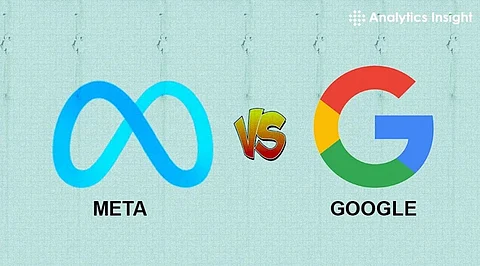

Two tech giants, Google and Meta, are pushing the boundaries of AI capabilities, though each has a different focus. Google GenWorld and Meta’s AI Vision have different approaches toward generative AI, 3D simulations, and visual processing. Both are revolutionizing industries but differ in their applications, technologies, and ultimate goals.
Let’s explore Google GenWorld vs. Meta’s AI Vision, which wins the battle between VR technology and 3D world simulation.
At the core of Google's GenWorld is the simulation of real or virtual environments to improve decision-making, planning, and interactivity, especially in robotics, autonomous vehicles, and gaming. The world models developed by Google are solutions that can help autonomous systems understand and navigate complex environments. This enables AI agents to operate realistically within these simulations, opening doors to real-world applications.
Meta’s AI Vision is about enhancing user interaction across social media platforms through better visual data interpretation. Meta’s AI system is designed to understand images and videos in real time, improving user engagement on platforms like Facebook, Instagram, and WhatsApp. The technology focuses heavily on image recognition, augmented reality (AR), and virtual reality (VR), ultimately creating immersive social media experiences and personalizing content for users.
In the realm of capabilities, Google's GenWorld can generate dynamic, interactive 3D worlds using video data. The Genie 2 model is capable of converting text and images into complex environments that adapt in real time. It also includes realistic physics, allowing the simulation of object interactions, which makes it very valuable for robotics and gaming applications. Besides, Google uses sophisticated techniques such as autoregressive modeling and autoencoding to capture spatial and temporal dynamics, which is important in generating accurate 3D environments.
On the other hand, Meta AI Vision focuses more on image recognition and processing. Meta AI, using CNNs, can analyze visual data to detect objects, recognize content, and understand scenes. This capability plays a central role in enhancing the AR/VR experiences that Meta is pushing forward in its metaverse projects. Meta's AI Vision also integrates real-time data processing to give users instant information based on their interactions, enhancing engagement through features like real-time content recognition and personalized experiences.
Both systems employ very advanced techniques in machine learning but in a different way. GenWorld has focused more on video data, which allows the creation of a better understanding of spatial and temporal relationships in simulation. Data used by this approach includes video autoregression and encoding to create dynamic over-time environments that simulate.
Meta's AI Vision, however, uses CNNs for image processing and transformer architectures for language tasks. It can classify and understand the contents of images and text with the help of vast datasets of labeled images and text. Thus, its system is quite fast for applications requiring rapid content recognition and user interaction, especially in dynamic social media settings.
These two AI systems differ in their purposes, and the applications further highlight this point. GenWorld is targeted to industries requiring highly advanced simulations in training or operations. It best fits into the robotics, autonomous vehicles, and gaming areas because understanding complex environments and real-world physics is necessary for effective AI agent performance in these fields.
The counterpart is Meta AI Vision, where the focus remains on consumer applications within social media platforms. Generating AI, real-time information retrieval and AR/VR capabilities will enhance user engagement. An example would be Meta AI in creating virtual spaces in the metaverse, opening up new channels for social interactions and content development.
GenWorld will face tough competition in the robotics and autonomous systems arena, focusing on simulating environments to train AI agents. This makes Google a leader in applications that require real-time decision-making in complex scenarios.
On the other hand, Meta's AI Vision faces competition in the AR/VR space, as Apple and Google are also leading the way with immersive digital experiences. What differentiates Meta is its focus on social media and content personalization, as AI is deeply integrated into user interactions across its platforms.
Looking to the future, Google’s GenWorld represents a breakthrough in simulating real-world environments, with the potential to revolutionize industries such as robotics, autonomous transportation, and gaming. By advancing AI’s ability to interact within dynamic settings, Google could redefine how machines understand and interact with the world.
Meta's AI Vision is helping shape the future of social connection through deep integration into AR/VR applications and social media sites. It promises the creation of an immersive and highly personalized digital world, possibly changing user interaction with content and other online users.
Industries which benefit from Google GenWorld vs. Meta AI Vision:
Meta's AI Vision is primarily to augment user interactions, operational efficiencies, and personalized experiences. On the other hand, GenWorld is an advanced simulation that can benefit industries through realistic training environments and decision-making support in complex scenarios.
Both Google's GenWorld and Meta's AI Vision come with great promise, but they serve distinct purposes. Google's GenWorld is well in the lead concerning the development of realistic 3D simulations meant for applications in robotics and autonomous systems.
Meta's AI Vision, on the other hand, focuses on advancing social interactions with advanced image recognition and immersive AR/VR technologies. This indicates the various ways AI is developing, with both companies contributing towards the future of technology.
